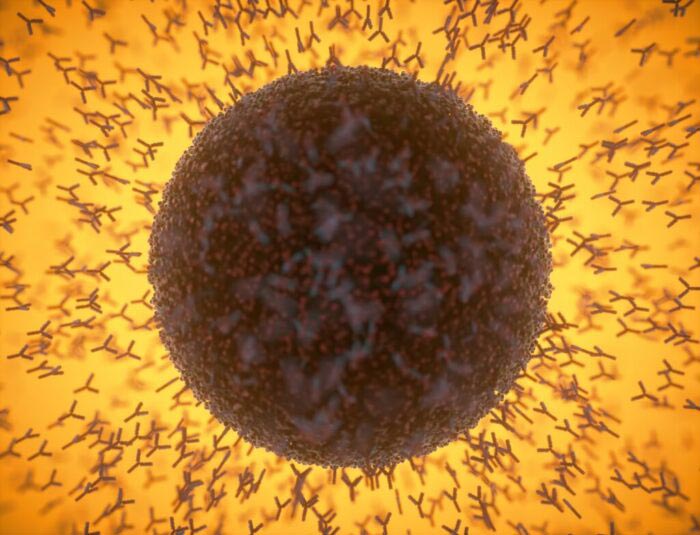Danish scientists have solved the question of how the hepatitis C virus (HCV) hides in humans. With a new method for examining virus samples, researchers from the University of Copenhagen have solved a long-standing mystery about how the virus avoids the human body’s immune defence system. The result may have an impact on how we track and treat viral diseases in general. The study has just been published in the scientific journal Nature.

Hepatitis C was discovered in 1989 and is one of the most studied viruses on the planet, but its ability to evade the human immune system has never been successfully explored before.
A new method for examining virus samples has led researchers at the University of Copenhagen and Hvidovre Hospital to the answer, which is: the virus just puts on a ‘mask’. By donning this mask, the virus can remain hidden while making copies of itself to infect new cells. The mask cloaks the virus in the form of a molecule already in our cells. Disguised by the molecule, our immune systems confuse the virus with something harmless that needn’t be reacted to.
Most RNA viruses (like hepatitis C, COVID-19, the flu, and others) have something called a five-prime cap (often written as a 5′ cap) on their ends, which acts to protect the virus and maintain its stability during replication. Until now, nobody had been able to find hepatitis C’s five-prime cap.

Now, thanks to this research, we know that the five-prime cap used by HCV is flavin adenine dinucleotide (FAD), a common chemical already present in the biological machinery of our cells. FAD is a molecule composed of Vitamin B2 and the vital energy-carrying molecule ATP. FAD is vital for our cells to convert energy. The FAD molecule’s importance and familiarity to our cells makes it ideal camouflage for a malicious virus.
“How the Hepatitis C virus manages to hide in our liver cells without being detected by the immune system has always been a bit of a mystery. Our revelation of the virus’ masking strategy is important, as it could pave the way for new ways of treating viral infections. And it is likely that other types of viruses use the same trick,” explained Associate Professor Jeppe Vinther of the University of Copenhagen’s Department of Biology, who together with associate professor Troels Scheel and professor Jens Bukh, from Copenhagen Hepatitis C Program, headed the research.
For several years, the research team had a good idea that FAD was helping the virus hide in infected cells, but they lacked a clear way to prove it. To solve the challenge, they turned to Arabidopsis, a well-known experimental plant among researchers. It was, for example, the first plant to have its full genome sequenced.

“We were getting desperate to find a way to prove our hypothesis, which is when we purified an enzyme from the Arabidopsis plant that can split the FAD molecule in two,” explains Anna Sherwood from Department of Biology, who together with Lizandro Rene Rivera Rangel are first authors of the study.
Using the enzyme, the researchers were able to split the FAD and prove that the hepatitis C virus used it as a mask.
As an RNA virus, hepatitis C’s genetic material consists of RNA that must be copied once the virus enters its host organism. New RNA copies are used to take over new cells, and one end of the RNA’s genetic material is masked by the FAD.
According to Jeppe Vinther, it is very realistic that other RNA viruses use similar masking techniques to spread without being detected by cellular control systems. In fact, researchers have already found another virus that uses the same strategy. And there are likely more.

“All RNA viruses have the same need to hide from the immune system and there is a good chance that this is just the beginning. Now that we’re attuned to this trick, it opens up the possibility of developing new and perhaps improved methods of tracking and treating viral infections in the future,” concludes Jeppe Vinther.
Last updated 10 April 2025
More from:
Enjoyed this article? Subscribe to be notified whenever we publish new stories.
Subscribe for Updates









